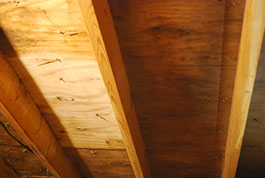
Call Us 603-598-0625
Request A Callback
home / services / Mole Removal



Mold Removal
Mold Removal (Remediation)
Water damage on building materials such as wood, paper, drywall, etc. can lead to mold growth. If the problem is left unattended, it may continue to grow bringing your remediation process from hundreds to thousands of dollars.
Many mold problems lurk behind walls, ceilings, under carpeting, and under flooring. Water penetrates areas the eye cannot see, and mold begins to grow. Once you see visible signs on walls, ceilings, or floors (staining, mushrooms growing, etc.) the mold problem is usually pretty severe.
Simply ripping out moldy building material can lead to spore rebase and cross contamination. We place work areas under negative air filtration and use equipment with HEPA filtration. Items are fully bagged before leaving the work area. Special cleaners and inhibiters are used to assure that the remediation process was a success.
Thorough air quality testing is provided to determine the level of contamination, as well as remediation.
The potentially harmful effects of mold in your home
The presence of mold in a home is a sight few homeowners want to see. In addition to being unsightly, mold found in a home can be unhealthy.
While certain cleaners may prove effective at removing mold, homeowners who want to remove existing mold growths and prevent future growths may benefit from gaining a greater understanding of mold and why it grows inside homes.
What is mold?
Mold is a blanket term used to describe fungi that can be found both indoors and outdoors. Many species of mold exist, and the Centers for Disease Control and Prevention notes that some estimates suggest there may be more than three hundred thousand different species of mold. Common indoor molds include cladosporium, penicillium, alternaria, and aspergillus.
Which conditions promote mold growth?
Homeowners may notice that mold tends to grow in specific areas of their homes but not in others, and that’s because molds grow best in certain conditions. Warm, damp and humid conditions, such as those found in poorly ventilated bathrooms and basements, make ideal breeding grounds for mold.
What are the effects of mold exposure?
Molds are a natural and resilient part of the environment, but mold growth indoors should be addressed and avoided. Mold spores are tiny and invisible to the naked eye, and when these spores attach to wet surfaces, they begin to grow. Once these spores begin to grow, they can then affect people in various ways.
Roughly a decade ago, the Institute of Medicine found sufficient evidence to support a link between exposure to indoor mold and respiratory tract issues, such as coughing and wheezing in people who were otherwise healthy. The same report found that mold may trigger asthma symptoms among people with asthma and hypersensitivity pneumonitis, a disease in which the lungs are inflamed when a person breathes in certain dusts he or she is allergic to, in people susceptible to that condition.
Some people who do not have a preexisting condition can still be sensitive to molds. When exposed to mold, such people may experience symptoms like nasal stuffiness, eye irritation, wheezing, or skin irritation.
How can exposure to mold be decreased at home?
Adequate ventilation is arguably homeowners’ best friend with regard to reducing mold exposure at home. Control humidity levels in areas of the home that tend to be warm and humid, such as the kitchen and bathroom. Install an exhaust fan in the kitchen and bathroom and a window in the bathroom if yours does not already have one.
The CDC recommends that humidity levels be no higher than 50 percent throughout the day, and an air conditioner and dehumidifier can help you keep indoor humidity levels in check, especially during the summer when humidity levels tend to be their highest of any time during the year.
When renovating your home, remove any existing carpeting from bathrooms and basements and toss out soaked carpets or upholstery as well. If painting will be part of your home renovation projects, add mold inhibitors to paints prior to application.
Mold that grows inside a home is unsightly and potentially unhealthy. But concerned homeowners can take several reactive and proactive steps to reduce existing mold growths and prevent them from returning in the future!
Serving Southern New Hampshire and Eastern Massachusetts for over 50 years!
© 2023 Roland's Carpet Cleaning. All Rights Reserved.